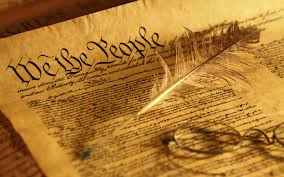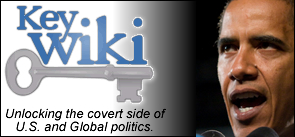By Publius Huldah
The compact for a National Popular Vote (NPV) is a destructive scheme. Yet it’s been approved by several States; and is pending in others. Since the text of the compact no longer seems to be set forth on the NPV website, we’ll look at the NPV bill now pending in Tennessee.
In a nutshell, the compact seeks to evade the 12th Amendment to our Constitution (where the States elect the President); and substitutes a national popular vote where inhabitants of major metropolitan areas elect the President.
The federal government created by our Constitution is a Federation of Sovereign States united under a federal government for those limited purposes itemized in the Constitution; with all other powers reserved by the States or the People.
So that The States – The Members of the Federation – could maintain their independence and sovereignty, our Framers wrote these provisions into our Constitution:
- State Legislatures were to choose the U.S. Senators for their State (Art. I, §3, cl. 1); and,
- The States, as separate political entities, were to elect the President (Art. II, §1, cls. 2 & 3).
The People were to elect only their Representatives to the House (Art. I, § 2, cl.1).
James Madison explains in Federalist No. 45 (7th para), why this ensured that The States would maintain control over the federal government:
“The State governments may be regarded as constituent and essential parts of the federal government …Without the intervention of the State legislatures, the President of the United States cannot be elected at all. They must in all cases have a great share in his appointment, and will, perhaps, in most cases, of themselves determine it. The Senate will be elected absolutely and exclusively by the State legislatures. …Thus, each of the principal branches of the federal government will owe its existence more or less to the favor of the State governments …” [boldface mine]
The result of State Legislatures choosing the U.S. Senators and controlling the election of the President [via the selection of Electors], was that the States would be able to control the federal government.
But we threw away one of these safeguards when we foolishly ratified the 17th Amendment with the popular election of U.S. Senators. This is how The States – The Members of the Federation – lost their representation in Congress and their control of the Senate.
We abandoned the other safeguard when we foolishly ignored the procedures in the 12th Amendment where small bodies of specially chosen wise and prudent men (Electors) made the selections of President and Vice President for their State. We allowed Electors to become rubber stamps for the popular vote in their State.
Our Framers didn’t want popular election of the President because they recognized that People are easily manipulated by those who take advantage of their “hopes and fears”, to steer them towards candidates favored by powerful groups (Federalist No. 64 (3rd & 4th paras; Federalist No. 68, etc.)
Furthermore, under the 12th Amendment, the electoral votes of each State are split according to how the Electors vote. If Tennessee obeyed the 12th Amendment, it would work like this when selecting President: 5 Electors vote for Candidate X; 4 vote for Candidate Y; and 2 vote for Candidate Z. Those would be the vote totals for President which would be sent to Congress. The same procedures are to be followed in a separate vote for Vice-President. 1 The “winner takes all” practice followed in most States is unconstitutional!
Under the scheme incorporated in the NPV bill pending in Tennessee, all of Tennessee’s electoral votes would be awarded to the presidential candidate who receives the most popular votes in all 50 States and the District of Columbia.
The wording of the compact is deliberately obscure. In plain English, this is what it does:
Each Member State will conduct a statewide popular election for President and Vice President.
(a) & (b) The State Election official in each Member State will add up the votes cast in all the States and the D.C. to get the total number of votes cast nationally for each presidential ticket. The State official will then designate the presidential ticket with the largest number of votes nationally as the “national popular vote winner”.
(c) & (g) Electors will then be appointed in each Member State who are to cast all their votes for the national popular vote winner.
So! If the popular vote in Tennessee is for James Madison, but the total national popular vote favors Adolf Hitler, then all of Tennessee’s 11 Electoral Votes are awarded to Adolf Hitler.
Indeed, the winner of the national popular vote will end up with all the electoral votes for every State. And do not think that the winner will fail to claim a “Mandate” for whatever he wants to do.
Every aspect of the NPV violates the 12th Amendment. It sets up a method of electing the President and vice-President which is altogether repugnant to our Constitution.
Furthermore, Art. I, §10, last clause, prohibits States from “enter[ing] into any Agreement or Compact with another State” “without the Consent of Congress”. So, whether the NPV Compact also violates Art. I, §10, last clause, depends on whether Congress consents to it. But Congress may not lawfully consent to unconstitutional compacts of the States!
Most of the Population of these United States is located in a few major metropolitan areas. Under the NPV scheme, these areas would decide the elections for President!
See this 3D map (scroll down) showing how the major metropolitan areas voted in the last presidential election.
The NPV is not about “making every vote count”. The NPV is about guaranteeing that every future presidential election is decided by inhabitants of major metropolitan areas. And it further diminishes State sovereignty.
Repeal the 17th Amendment. We must henceforth elect to Congress only those who are committed to repealing the 17th Amendment. This is the only way The States can regain control of the Senate.
Return to the 12th Amendment. We must dismantle the present unconstitutional and corrupt system and return to the method of electing the President and Vice President established in our Constitution. State Legislators could restore to their States right now the power to control the President! All States have to do is obey the 12th Amendment! Also, specially chosen Electors are far more likely to choose good Presidents than the ignorant masses which fill our major cities.
Even in its present perverted form, the “Electoral College” serves two important purposes: (1) It balances the influence of the heavily populated urban areas with the more sparsely populated rural areas; and (2) gives the smaller States a voice in the election of President.
As a People, we need to STOP being so eager to amend a Constitution we have never read and don’t understand.
Endnote:
1 For an illustration of how voting under the 12th Amendment is to be conducted, see THIS under the subheading, “The 12th Amendment Establishes Procedures For Voting By Electors.”


















The National Popular Vote bill does not amend or change anything in the Constitution.
The normal process of effecting change in the method of electing the President is specified in the U.S. Constitution, namely action by the state legislatures. This is how the current system was created, and this is the built-in method that the Constitution provides for making changes. The abnormal process is to go outside the Constitution, and amend it.
There is nothing in Article II (or elsewhere in the Constitution) that prevents states from making the decision now that winning the national popular vote is required to win the presidency.
Anyone concerned about the relative power of big states and small states should realize that the current Electoral College system shifts power from voters in the small and medium-small states to voters in the current handful of big states.
With National Popular Vote, when every popular vote counts and matters to the candidates equally, successful candidates will find a middle ground of policies appealing to the wide mainstream of America. Instead of playing mostly to local concerns in Ohio and Florida, candidates finally would have to form broader platforms for broad national support. Elections wouldn’t be about winning a handful of battleground states.
Now political clout comes from being among the handful of battleground states. 80% of states and voters are ignored by presidential campaign polling, organizing, ad spending, and visits. Their states’ votes were conceded months before by the minority parties in the states, taken for granted by the dominant party in the states, and ignored by all parties in presidential campaigns.
State winner-take-all laws negate any simplistic mathematical equations about the relative power of states based on their number of residents per electoral vote. Small state math means absolutely nothing to presidential campaign polling, organizing, ad spending, and visits, or to presidents once in office.
In the 25 smallest states in 2008, the Democratic and Republican popular vote was almost tied (9.9 million versus 9.8 million), as was the electoral vote (57 versus 58).
In 2012, 24 of the nation’s 27 smallest states received no attention at all from presidential campaigns after the conventions. They were ignored despite their supposed numerical advantage in the Electoral College. In fact, the 8.6 million eligible voters in Ohio received more campaign ads and campaign visits from the major party campaigns than the 42 million eligible voters in those 27 smallest states combined.
The 12 smallest states are totally ignored in presidential elections. These states are not ignored because they are small, but because they are not closely divided “battleground” states.
Now with state-by-state winner-take-all laws (not mentioned in the U.S. Constitution, but later enacted by 48 states), presidential elections ignore 12 of the 13 lowest population states (3-4 electoral votes), that are non-competitive in presidential elections. 6 regularly vote Republican (AK, ID, MT, WY, ND, and SD), and 6 regularly vote Democratic (RI, DE, HI, VT, ME, and DC) in presidential elections.
Similarly, the 25 smallest states have been almost equally noncompetitive. They voted Republican or Democratic 12-13 in 2008 and 2012.
Voters in states that are reliably red or blue don’t matter. Candidates ignore those states and the issues they care about most.
Kerry won more electoral votes than Bush (21 versus 19) in the 12 least-populous non-battleground states, despite the fact that Bush won 650,421 popular votes compared to Kerry’s 444,115 votes. The reason is that the red states are redder than the blue states are blue. If the boundaries of the 13 least-populous states had been drawn recently, there would be accusations that they were a Democratic gerrymander.
Support for a national popular vote is strong in every smallest state surveyed in recent polls among Republicans, Democrats, and Independent voters, as well as every demographic group
Among the 13 lowest population states, the National Popular Vote bill has passed in 9 state legislative chambers, and been enacted by 4 jurisdictions.
The U.S. Supreme Court has ruled that congressional consent is only necessary for interstate compacts that ‘encroach upon or interfere with the just supremacy of the United States [U.S. Steel Corporation v. Multistate Tax Commission, 1978].’
Because the choice of method of appointing presidential Electors is an “exclusive” and “plenary” state power, there is no encroachment on federal authority.
Thus, under established compact jurisprudence, congressional consent would not be necessary for the National Popular Vote compact to become effective.
A survey of Tennessee voters showed 74% overall support for the idea that the President should be the candidate who receives the most popular votes in all 50 states.
By political affiliation, support for a national popular vote for President was 68% among Republicans, 81% among Democrats, and 74% among independents/others.
By gender, support was 80% among women and 67% among men.
By age, support was 71% among 18-29 year olds, 70% among 30-45 year olds, 77% among 46-65 year olds, and 73% for those older than 65.
With the National Popular Vote bill, the winner of the national popular vote will end up with all the electoral votes of the States enacting the bill. Non-enacting states will award their electors however they want.
“The bottom line is that the electors from those states who cast their ballot for the nationwide vote winner are completely accountable (to the extent that independent agents are ever accountable to anyone) to the people of those states. The National Popular Vote states aren’t delegating their Electoral College votes to voters outside the state; they have made a policy choice about the substantive intelligible criteria (i.e., national popularity) that they want to use to make their selection of electors. There is nothing in Article II (or elsewhere in the Constitution) that prevents them from making the decision that, in the Twenty-First Century, national voter popularity is a (or perhaps the) crucial factor in worthiness for the office of the President.”
– Vikram David Amar – professor and the Associate Dean for Academic Affairs at the UC Davis School of Law. Before becoming a professor, he clerked for Judge William A. Norris of the United States Court of Appeals for the Ninth Circuit and for Justice Harry Blackmun at the Supreme Court of the United States.
In Gallup polls since 1944, only about 20% of the public has supported the current system of awarding all of a state’s electoral votes to the presidential candidate who receives the most votes in each separate state (with about 70% opposed and about 10% undecided).
Support for a national popular vote is strong among Republicans, Democrats, and Independent voters, as well as every demographic group in every state surveyed recently. In the 41 red, blue, and purple states surveyed, overall support has been in the 67-81% range – in rural states, in small states, in Southern and border states, in big states, and in other states polled.
In state polls of voters each with a second question that specifically emphasized that their state’s electoral votes would be awarded to the winner of the national popular vote in all 50 states, not necessarily their state’s winner, there was only a 4-8% decrease of support.
Question 1: “How do you think we should elect the President: Should it be the candidate who gets the most votes in all 50 states, or the current Electoral College system?”
Question 2: “Do you think it more important that a state’s electoral votes be cast for the presidential candidate who receives the most popular votes in that state, or is it more important to guarantee that the candidate who receives the most popular votes in all 50 states becomes president?”
Support for a National Popular Vote
South Dakota — 75% for Question 1, 67% for Question 2.
Connecticut — 74% for Question 1, 68% for Question 2,
Utah — 70% for Question 1, 66% for Question 2,
The bill is virtually the same in every chamber in every state.
We will continue to elect the President by a majority of Electoral College votes by states.
Big cities would not get all of candidates’ attention, much less control the outcome.
One-sixth of the U.S. population lives in the top 100 cities, and they voted 63% Democratic in 2004.
One-sixth lives outside the nation’s Metropolitan Statistical Areas, and rural America voted 60% Reublican.
The remaining four-sixths live in the suburbs, which divide almost exactly equally.
The presidential election system, using the 48 state winner-take-all method or district winner method of awarding electoral votes used by 2 states, that we have today was not designed, anticipated, or favored by the Founding Fathers. It is the product of decades of change precipitated by the emergence of political parties and enactment by states of winner-take-all or district winner laws, not mentioned, much less endorsed, in the Constitution.
The Electoral College is now the set of 538 dedicated party activists, who vote as rubberstamps for presidential candidates. In the current presidential election system, 48 states award all of their electors to the winners of their state. This is not what the Founding Fathers intended.
The Founding Fathers in the Constitution did not require states to allow their citizens to vote for president, much less award all their electoral votes based upon the vote of their citizens.
State-by-state winner-take-all laws to award Electoral College votes, were eventually enacted by states, using their exclusive power to do so, AFTER the Founding Fathers wrote the Constitution. Now our current system can be changed by state laws again.
National Popular Vote is based on Article II, Section 1 of the U.S. Constitution, which gives each state legislature the right to decide how to appoint its own electors. Unable to agree on any particular method for selecting presidential electors, the Founding Fathers left the choice of method exclusively to the states:
“Each State shall appoint, in such Manner as the Legislature thereof may direct, a Number of Electors….”
The U.S. Supreme Court has repeatedly characterized the authority of the state legislatures over the manner of awarding their electoral votes as “plenary” and “exclusive.”
States have the responsibility and power to make all of their voters relevant in every presidential election and beyond.
Federalism concerns the allocation of power between state governments and the national government. The National Popular Vote bill concerns how votes are tallied, not how much power state governments possess relative to the national government. The powers of state governments are neither increased nor decreased based on whether presidential electors are selected along the state boundary lines, or national lines (as with the National Popular Vote).